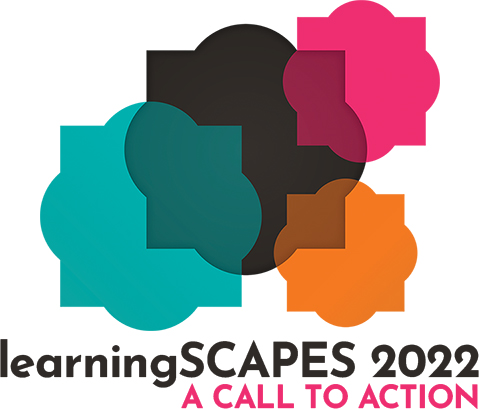 | 1 LU / HSW |
 | 1 LU / HSW |
“The connectivist view of learning as a network creation process significantly impacting the way learning is designed and developed.” In this ‘Digital Age’, educators and designers alike must shift the focus to the emerging ideal ecology that actually permits learning to flourish. This age has produced enormous, societal shifts, and how people learn and function is forever altered. Authentic learning is messy. It thrives in nebulous, informal places while engaged in chaotic processes. The chaotic process is what actually fuels creativity, and it thrives in contradictory situations: ‘hybrid’ spatial patterns, and collaborative cultures connecting participatory creativity. Behavioral cues formed from new hybrid design solutions connect the ‘networked’ thinking paradigm in this shift wherever learning occurs. This research study presents the identified relationships between learning, creativity, and spatial designs. It introduces “hybrid language patterns” of architectural affordances suggesting new behaviors and emotions impacting collaborative creativity. Some important factors emerged from the study:
This session provides attendees with a ‘sketch’ of Connectivist Theory, connecting experiences of time/place using a new hybrid language for learning impacting learners, their learning processes, and the design of learning places to fit the individual across cohorts. It introduces, and provides ideas for designing hybrid, adaptive, and active systems of spaces supporting cultures of learning, addresses environmental behavior responses which promote positive emotions when in collaborative creative modes. It shares design ideas for generating opportunities to engage the whole person’s body, mind and spirit – allowing an individual to thrive. Askes the audience to dream with the presenters on what constitutes the new hybrid language holistically supporting the learner.
Learning Objectives:

“Dr. Lennie,” [Environment Behavior Psychology and Interior design] is a pioneer in exploring how the design of the built place impacts us as humans – focus on learning places. She was the former chair of two design schools, the founding researcher for Steelcase Learning, highly published in research journals, an author, a frequent speaker, and acts as a research consultant and designer for learning spaces. She works to ‘get research off the shelf’ for A/D community. https://independent.academia.edu/LennieScottWebber

Anat Mor-Avi, Ph.D., is an architect and a researcher, affiliated with the Illinois Institute of Technology, the College of Architecture in Chicago, USA. Over the last 20 years, she has focused on designing learning environments in the USA and Israel, while empowering the interrelation between the evolving pedagogies, collaborative creativity and the physical surrounding. As a pedagogical architect, Mor-Avi acts as a consultant for various authorities among them the Israeli Ministry of Education while participating in a national multi-disciplinary research group connecting practice with research related to the connection between architecture and education.
What is the learners’ experience? Who are they? How do they differ? How do they respond differently from one another to similar environments? Is there a one-size-fits-all solution? Or is a custom solution composed of aggregate parts more appropriate?
Primary Core Competency
Design of Educational Facilities: Acts as a resource to the design team in providing ongoing guidance and support to ensure that the emerging and ultimate design aligns with the established community vision, education goals, future programming, written design standards, best/next practices and education policy.
Learning Units/Health, Safety, Welfare (LU/HSW)
Experience how to include: (1) convergent and divergent cultural thinking responses supporting both cognitive and emotional needs, (2) private and public conditions reflecting the needs of the individual vs. the collective’ [or team] physical spatial needs, and (3) the concrete and abstract settings typologies relating to passive vs. active spaces [physical/emotional/cognitive needs]; Ask attendees to reimagine a new hybrid language allowing learners to thrive cognitively, physically, and psychologically; Provide reflective opportunities on how hybrid designs influence human behavioral responses in terms of authentic learning, impacting learners’ minds, bodies and spirits connections across models.